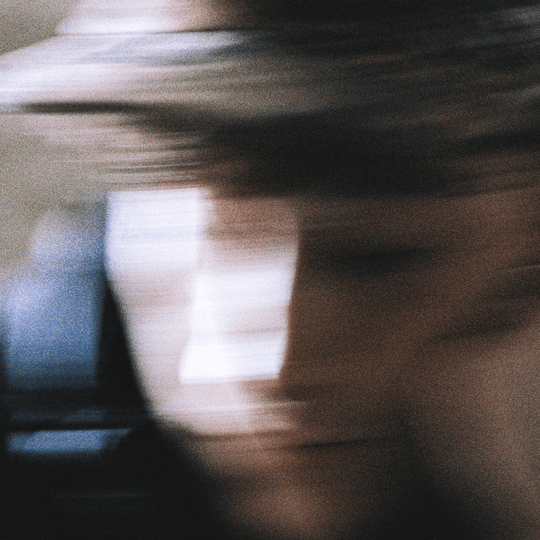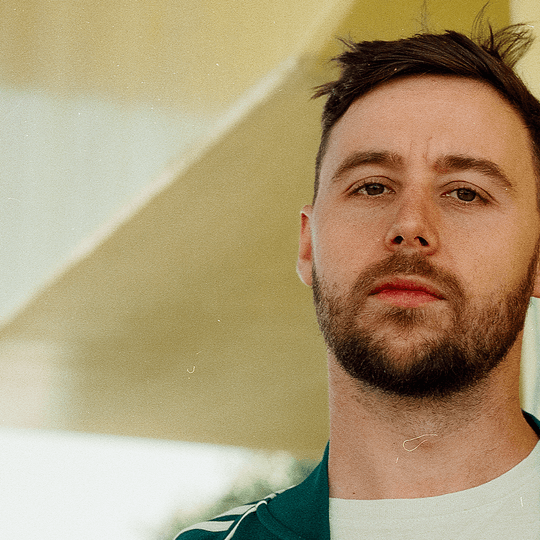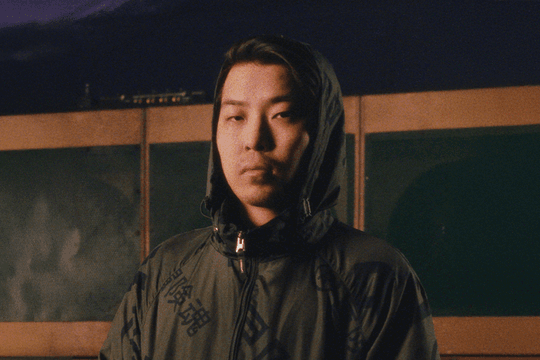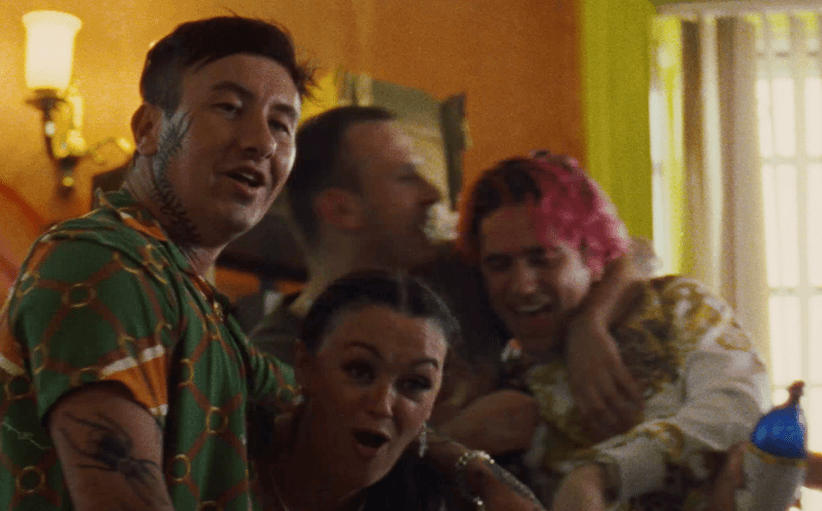10 Best
08.01.2013, Words by dummymag
David Bowie on film
As you’ll no doubt be aware, today is David Bowie’s 66th birthday and he decided to celebrate it in the most unlikely fashion – by releasing a (rather good) single and announcing his first album in 10 years. Not bad for somebody who most assumed had retired.
Looking to celebrate this news today, we decided that, because Bowie is as much a visual artist as a musical one, we would dig out some of his more unusual appearances on screen. Anybody interested in the visuals of Bowie, particularly the fashion side, could do well to visit the V&A later this year for their David Bowie exhibition, taking place from 23rd March to 28th July.
- The Image (1969)
An odd, surprisingly graphic short film in which David Bowie plays a painting that comes to life and starts haunting the artist that created him. Directed by Michael Armstrong, it’s not a particularly good film, but Bowie is a perfect fit as the painting (credited as “The Boy” at the end), a beautiful and mysterious being not from this world. This was Bowie’s first ever screen appearance (he made his first TV appearance performing Space Oddity the next year), and as this list will show, he went on to make many, many appearances since.
- Cracked Actor (1975)
This BBC documentary, directed by Alan Yentob, follows Bowie on his Diamond Dogs tour in America after he killed off his Ziggy Stardust persona. What might be a fascinating documentary of Bowie during a transitional period (although, admittedly, he is always in a transitional period) became an essential document of a man in the middle of a psychotic breakdown brought on by cocaine. This grim fact aside, it also contains some fantastic (and rare) footage taken from the tour, including performances of Time, Diamond Dogs and, of course, Cracked Actor.
- The Man Who Fell To Earth (1976)
Cracked Actor showed Bowie at a point of his life that he doesn’t quite believe he survived, but The Man Who Fell To Earth somehow seems a truer representation of this period. Shot a year on from Yentob’s documentary and directed by Nicolas Roeg, the movie stars Bowie as an alien who comes to Earth to bring water back to his drought-ridden home planet but ends up falling for the human vices of alcohol, sex and television. It’s Bowie’s defining role as an actor for good reason – he was still a heavy cocaine user and the sense of alienation that he brings to the performance simply could not have come from any other actor or at any other time. “I was totally insecure with about 10 grams [of cocaine] a day in me.” Bowie said) of his time on set, “I was stoned out of my mind from beginning to end.”
- The Elephant Man on Broadway (1981)
In 1980-81, Bowie appeared as in a Broadway production of The Elephant Man, a play based on the true story of the deformed John Merrick. He played the role – notably, without any prosthetic makeup – a total of 157 times between 1980 and 1981, and there is very little lasting footage of the production. Interestingly, the play started showing not long after David Lynch’s Oscar-nominated The Elephant Man was released, and as you’ll see further down the list, this was not the first time Lynch and Bowie had run-ins. You can watch a full archive interview regarding the production here.
- Station To Station scene in Christiane F. (1981)
Set in Berlin during 1975, Uli Edel’s debut movie is a frank depiction of heroin addiction from a time when heroin addiction was only just beginning to enter the public consciousness. It’s soundtracked by much of Bowie’s melancholic Berlin-era output and features concert footage from the man himself, a huge boost to the movie’s profile, leading to Edel becoming a successful Hollywood director today. Funnily enough, these scenes were mostly shot in New York – Bowie could not come to Berlin to shoot the footage on account of being in The Elephant Man, whilst the shots of the larger crowds are actually taken from, of all places, an AC/DC concert.
- David Bowie in Bertolt Brecht’s Baal (1982)
Following on from his appearance in The Elephant Man, Bowie performed in a BBC adaptation of Berlolt Brecht’s Baal in 1982. Adapted for the screen by John Willett and directed by Alan Clarke, it’s one of the odder things to be found when trawling Youtube – partly because Bowie and Brecht seems such an odd combination, but also because so little mention of the play has been made before. When Bowie was chosen to appear in it, it was to the surprise of the producers that he was completely familiar with the text of Baal and with the history of the Weimar Germany, having apparently become an amateur scholar during his time in Los Angeles. He also released an EP of Brecht poems to tie in with it, the final release for his RCA contract. But whilst this incredibly commercial parting shot might have seemed like a middle finger, it was also his last release of experimental music before the era of 1980s megastardom set in.
- Jazzin’ For Blue Jean (1984)
Bowie in the 1980s was lost in the wilderness of gloss and slickness, something a cynic might attribute to his coming off of the drugs but which probably had more to do with a general lack of steam after years stretching himself both creatively and physically. To promote his 1984 single Blue Jean, Bowie released the twenty-minute short film Jazzin’ For Blue Jean, directed by Julien Temple. It’s a self-referential short with Bowie playing two characters, that came at a time when Bowie was longing for the same youth-led London of the sixties that was lacking in Thatcherite Britain. Working with Temple, a filmmaker that was leading the way with British cinema at the time, was a chance for him to feel relevant and modern again.
- Fame 90 (1990)
Needing a remix of a successful American single before the launch of his Sound+Vision tour and the ‘Changesbowie’ compilation, Bowie elected to remix his 1975 single Fame, and an accompanying video was shot by the then lesser known director Gus Van Sant. It’s not the most incredible video you’ll ever see and represents an even less incredible point in Bowie’s career, but it was featured in a retrospective of Bowie videos at the Museum of Modern Art that was curated by Sonic Youth’s Thurston Moore. The MoMA retrospective sought to show Bowie’s various different guises through the medium of the music video, and the dated, retro-goggled clip for ‘Fame 90’ is as good a representation of where he was looking at the beginning of 1990, post-Tin Machine, as any.
- Twin Peaks – Fire Walk With Me (1992)
Perhaps Bowie’s most beguiling screen role was a fleeting appearance in David Lynch’s Twin Peaks – Fire Walk With Me in 1992. A prequel and sequel to Lynch & Mark Frost’s seminal Twin Peaks TV series, Fire Walk With Me was something of a commercial flop but is perhaps one of Lynch’s finest films. In this memorable scene, Bowie appears as the long lost FBI Agent Phillip Jeffries, pointing a finger at the room and speaking in a thick southern drawl about a figure known as ‘Judy’. The scene makes absolutely no sense according to the Twin Peaks universe, and it has absolutely no bearing on the narrative logic of Fire Walk With Me – it’s just a brilliant scene elevated to new heights by the mere inclusion of Bowie. Later down the line, Lynch would use Bowie’s 1990s experiments with drum and bass, the exquisite I’m Deranged, in the exhilarating opening sequence of his 1997 masterpiece Lost Highway.
- David Bowie & Alicia Keys – Changes (2006)
It seems appropriate to end this list with Bowie’s last live performance to date, singing alongside Alicia Keys at the Black Ball, a New York benefit event for Keep A Child Alive, in 2006. It also seems appropriate that, after years of work on costumes, high concept tours, slick concert films, expressive plays, roles in beautiful feature films, cutting edge music videos and intimate documentaries with some of the finest visual artists of their respective fields, the final appearance of Bowie playing live in the 21st Century was shot by an audience member on a shaky camera and uploaded to Youtube with a sound quality that is essentially inaudible. Critics had long talked about Bowie’s fading relevance in the modern world, and this would seem to justify everything they said. Still, after today’s news we can hope that history will be kinder to Bowie’s latter work, and with changes (sorry) on the horizon, we might still get some live footage fitting for the legend himself.
You might like
10 Best
Videos
Playlists













